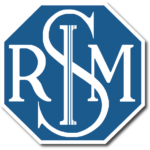
In infants and children with epilepsy do not perform routine CT of the skull and brain.
The diagnosis of epilepsy is clinical and requires integration with electroencephalographic (EEG) data. The CT examination is commonly prescribed after an epileptic episode however it has a limited role due to its low sensitivity in identifying small neoplasms, cortical developmental abnormalities and some vascular lesions. Studies on the role of CT in determining the etiology of epilepsy in children have not been identified in the scientific literature. Imaging is only required in cases of drug-resistant epilepsy, while it is not indicated in children with generalized genetic epilepsy and childhood benign epilepsy with rolandic (centrotemporal) spikes (BECRS) that responds to drug treatment. When necessary, the imaging of choice is MRI; the use of CT should be limited in the presence of contraindications to the MRI examination (medical devices, pacemakers, etc.). The X-ray examination of the skull does not find any indication in the patient with epilepsy as it can only identify skeletal anomalies not related to the disease.
Sources
1. NICE guideline (updated 12 May 2021)
2. ACR Appropriateness Criteria® Seizures-Child (2021)
3. A Bernasconi , F Cendes WH Theodore, RS Gill, MJ Koepp , RE Hogan , GD Jackson , P Federico , A Labate, AE Vaudano, I Blümcke, P Ryvlin , N Bernasconi. Recommendations for the use of structural magnetic resonance imaging in the care of patients with epilepsy: A consensus report from the International League Against Epilepsy Neuroimaging Task Force. Epilepsia. 2019 Jun;60(6):1054-1068. doi: 10.1111/epi.15612. Epub 2019 May 28
Download
PDFAttention. Please note that these items are provided only for information and are not intended as a substitute for consultation with a clinician. Patients with any specific questions about the items on this list or their individual situation should consult their clinician.


Recent Comments